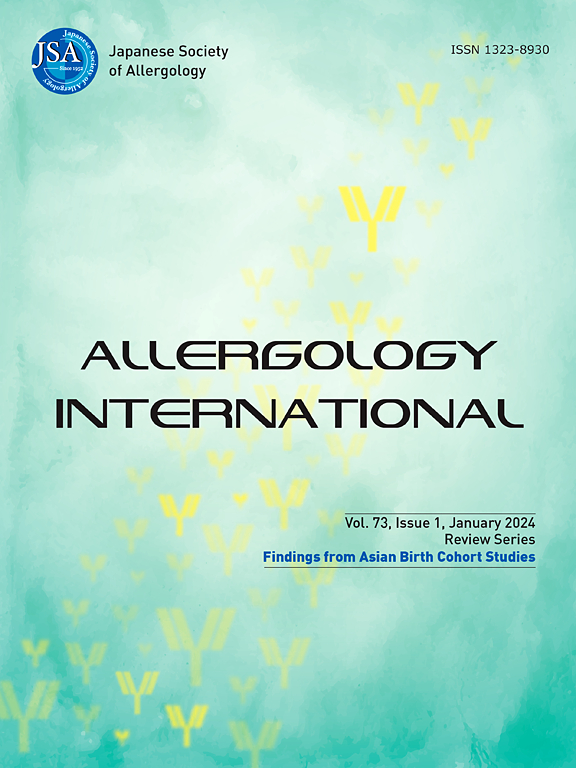胆碱能性荨麻疹的皮肤反应模式。
IF 6.2
2区 医学
Q1 ALLERGY
引用次数: 0
摘要
背景:胆碱能性荨麻疹(CholU)患者的皮肤反应模式各不相同,但其定义、发病率和临床意义仍不明确:方法:胆碱能性荨麻疹患者接受脉搏控制测力诱发试验,分析皮肤反应模式及其与发病部位、起始时间、严重程度、出汗行为、临床特征、疾病控制和生活质量(QoL)损害的相关性:根据喘息的大小、颜色、间距和形状以及周围皮肤的反应,我们确定了六种不同类型的 CholU 皮肤反应,其发病率各不相同,从 83%(I 型)到 11%(VI 型)不等。几乎所有患者(94%)都有≥1种类型的皮肤反应模式。大多数胆汁淤积症患者的出汗量减少,其中出汗量减少最明显的是 VI 型皮肤症状(非常小的、圆形的、红色的、间距很大的湿疹,周围有贫血晕)患者,这种症状只出现在四肢。V型皮肤征(大的、不规则的、贫血的、间距大的湿疹,伴有中等大小的红斑)与最严重的临床表现和最差的 QoL 有关:我们的分析表明,大多数患者都有一种以上的皮肤反应模式,不同的皮肤症状与不同的特征有关。未来的研究应确定胆碱酯酶抑制剂的治疗反应与皮肤症状类型之间的联系。本文章由计算机程序翻译,如有差异,请以英文原文为准。
Skin reaction patterns in cholinergic urticaria
Background
Skin reaction patterns vary across patients with cholinergic urticaria (CholU), but their definition, prevalence, and clinical significance remain ill characterized.
Methods
Patients with CholU underwent pulse-controlled ergometry provocation testing to analyze skin reaction patterns and their correlation with location, onset, severity, sweating behaviour, clinical features, disease control, and quality of life (QoL) impairment.
Results
Based on the size, color, spacing, and shape of wheals as well as their surrounding skin responses, we identified six distinct types of CholU skin reactions, which differed in prevalence, from 83% (Type I) to 11% (Type VI) of patients affected. Almost all patients (94%) had ≥1 type of skin reaction pattern. Sweating was reduced in the majority of CholU patients and most prominently reduced in patients with Type VI skin signs (very small, round, red, widely spaced wheals with surrounding anemic halo), which emerged exclusively on the extremities. Type V skin signs (large, irregular, anemic, widely spaced wheals with moderate size erythema) were associated with the most severe clinical presentation and poorest QoL.
Conclusions
Our analysis showed that most patients have more than one type of skin reaction patterns and that different skin signs are linked to distinct features. Future studies should determine any links between treatment response and types of skin signs in CholU.
求助全文
通过发布文献求助,成功后即可免费获取论文全文。
去求助
来源期刊

Allergology International
ALLERGY-IMMUNOLOGY
CiteScore
12.60
自引率
5.90%
发文量
96
审稿时长
29 weeks
期刊介绍:
Allergology International is the official journal of the Japanese Society of Allergology and publishes original papers dealing with the etiology, diagnosis and treatment of allergic and related diseases. Papers may include the study of methods of controlling allergic reactions, human and animal models of hypersensitivity and other aspects of basic and applied clinical allergy in its broadest sense.
The Journal aims to encourage the international exchange of results and encourages authors from all countries to submit papers in the following three categories: Original Articles, Review Articles, and Letters to the Editor.
 求助内容:
求助内容: 应助结果提醒方式:
应助结果提醒方式:


